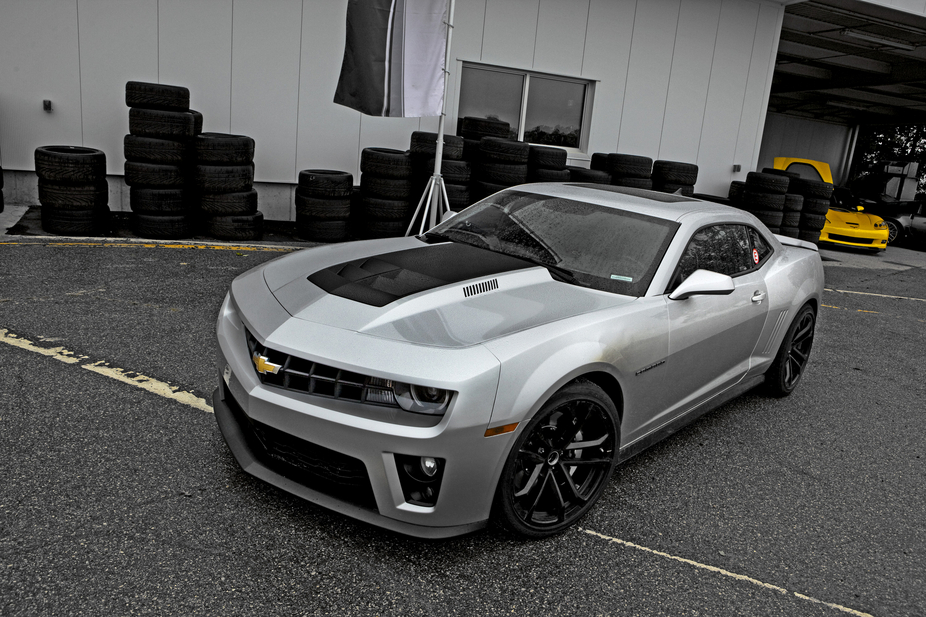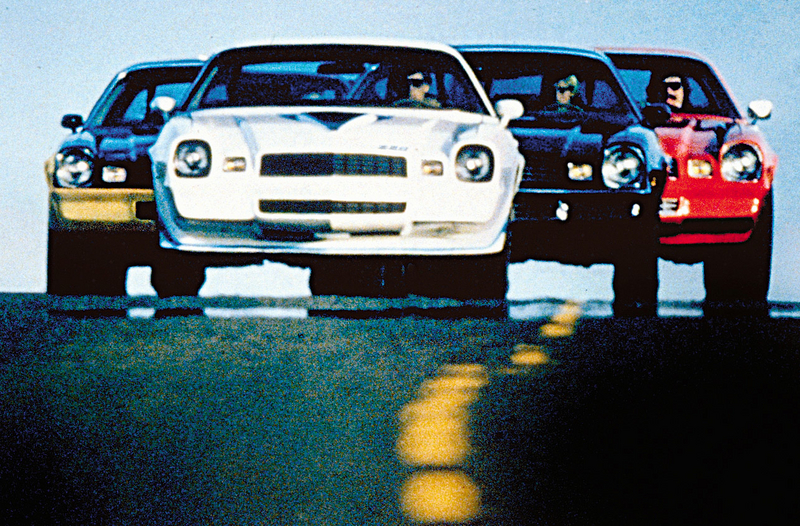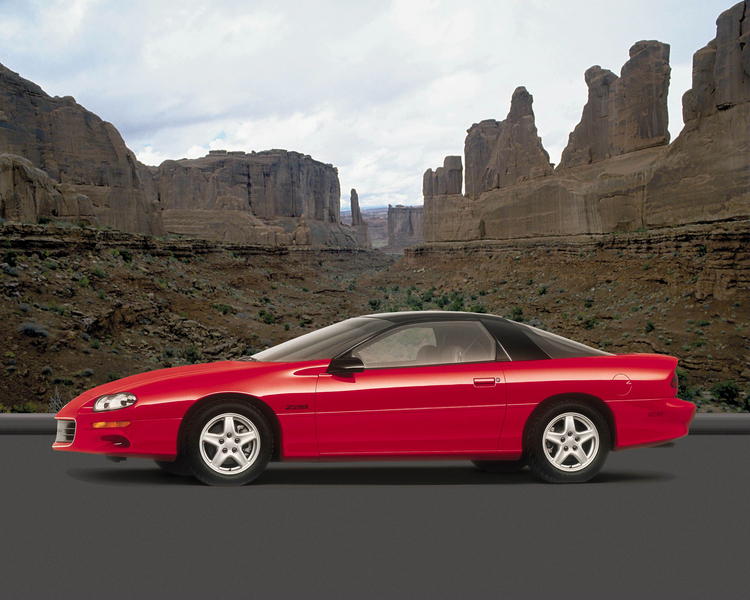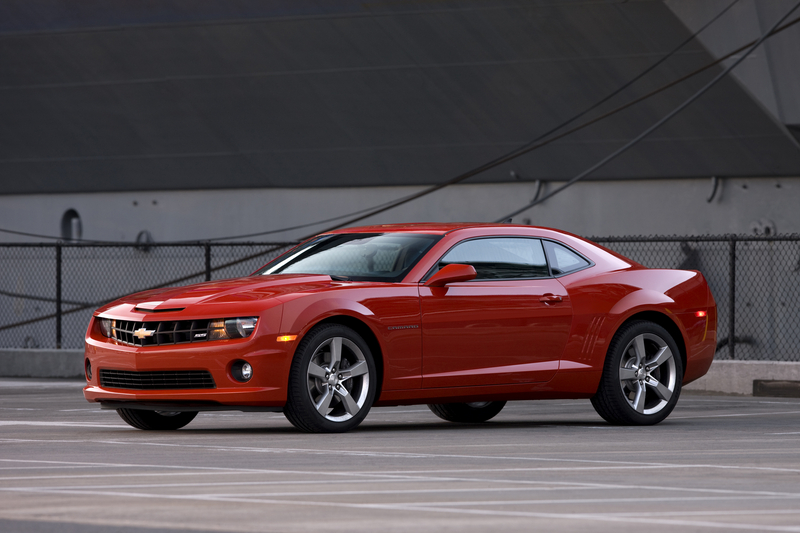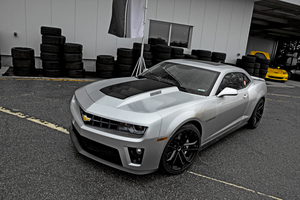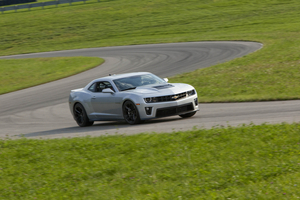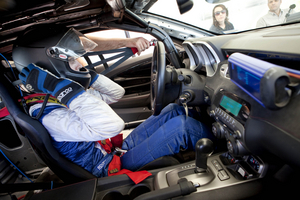|
Send this page to a friend! Fill in the form bellow | ||
news
Camaro ZL1 gets 580 bhp and downforce
Chevrolet has injected some steroids into the Camaro muscle car. The Camaro ZL1 produces 580bhp and is good for 170mph. However, to keep all of this in check it needed some aerodynamic fettling.
The downforce has allowed the Camaro ZL1 to lap the Nurburgring in 7:41.27 and has erased the lift produced by the standard car, which aids fuel economy but not lap times.
Chevrolet tested the car at General Motor’s Milford Road Course among others and also used a “rolling road” wind tunnel to gather concrete data.
The downforce makes the car feel far more stable, meaning at high speeds the ZL1 is far more responsive. Al Oppenheiser, Camaro chief engineer said “One of the best examples of how aerodynamics improved the performance of the ZL1 is the ‘Fuchsröhre,’ or Foxhole at the Nürburgring. In the ZL1, you can take that sweeping left-hand corner flat-out in fifth gear – nearly 160 mph (257 km/h). That’s a great testament to the confidence-inspiring stability and control the aerodynamic design helps give the Camaro ZL1.”
Here are the seven elements that give the ZL1 its downforce:
1. Front fascia – The front fascia channels air for engine and brake cooling. The lower opening is larger than in a Camaro SS, providing greater airflow to the engine’s intercooler heat exchanger. Even the grille “fins” were shaped for optimal airflow. The corners of the front fascia, too, were reshaped to minimize lift, while the brake-cooling ducts in the outer corners of the lower grille opening provide a direct, high-flow path to the brake rotors. Cooling the brakes helps extend their life, particularly n the race track.
2. Hood – The ZL1’s hood has a vented, carbon fiber insert, contributing to both engine cooling and aerodynamic downforce. With traditional sealed hoods, air trapped in the engine bay creates lift at the front axle. With the ZL1, the specially shaped vents draw air up through the engine bay – allowing a significant volume of air flow while keeping the front tires firmly connected to the pavement.
3. Front splitter – Instead of a traditional front air dam, the ZL1 incorporates a racing-style splitter to help create downforce. Unlike some competitors’ vehicles that come with an add-on splitter, the ZL1’s does not have to be installed at the track – it is installed at the factory, and is designed with enough ground clearance for all driving conditions.
4. Front tire deflectors – The deflectors push airflow around the rotating wheels and tires more efficiently, reducing lift and drag. And by using deflectors in place of a traditional air dam, the downforce is less sensitive to pitch changes, making the ZL1 feel more stable at high speeds.
5. Belly pans – The ZL1 has two of them: one beneath the engine cradle and one at the rear of the engine assembly, just in front of the transmission. Both extend the width of the chassis out to the wheelhouse opening, to minimize airflow turbulence under the car. NACA-style ducts are incorporated into the rear belly pan for transmission cooling.
6. Rocker panels – Although subtle in appearance, the carefully shaped rocker panels help reduce lift and drag, while also contributing to stability during high cross winds. They also provide stone protection with the ZL1’s wider tires.
7. Rear spoiler – One of the most dramatic aero enhancements comes with the ZL1’s rear spoiler, which contributes approximately 150 pounds of down force at the cost of only 1 count of drag. It is taller and wider than the Camaro SS spoiler and incorporates the center high-mounted stop lamp.
The Camaro ZL1 goes on sale later in 2012. A convertible model will also be offered for the 2013 model year, starting in the summer of 2012. Pricing will be announced later.
The Chevrolet Camaro Generations since 1966
The Chevrolet Camaro first went on sale in 1966 to compete on the market with the Ford Mustang. It was built on the same platform as the 1967 Pontiac Firebird. It is categorized as pony car, some versions though also as muscle cars. Since its introduction in the 1960s, the Camaro has been marketed through five generations, the latest being launched for the 2010 model year.
1967 Chevrolet Camaro
The first-generation Camaro was available as a 2-door, 2+2 seating, coupe or convertible with a choice of several V8 engines. It was conceived to challenge the Ford Mustang in the muscle car segment and this first-generation was produced until 1969. It recently provided the inspiration for the 2010 Camaro design.
1970 Chevrolet Camaro
The second generation Camaro was manufactured from 1970 until 1981. It was reviewed in 1974 and 1978 but as it was based on the same platform, the model showed strong similarities with the first generation. In 1971 the Road & Track magazine elected it as one of the 10 best cars in the world.
1982 Chevrolet Camaro
The third generation of the Camaro was introduced in 1982 and lasted until 1992. For the first time the model featured modern fuel injection, Turbo-Hydramatic 700R4 four-speed automatic transmissions, five speed manual transmissions, 16 inch wheels, a standard 4-cylinder engine and hatchback bodies.
Chevrolet Camaro
The fourth-generation Camaro was launched in 1993 as coupe body style with 2+2 seating or convertible with rear-wheel drive, and a choice of V6 and V8 engines. In 1997/1998 the model received updates on the interior and exterior. After 35 years the Camaro ceased production in 2002, due to declining sales.
Chevrolet Camaro ZL1
After being dropped from the Chevrolet portfolio in 2002, the Camaro model was revived with a fifth generation in 2009. The new series was preceded by a Camaro Concept in 2006 which eventually lead to the coupe version of the 2010 Camaro going on sale in 2009. For the 2011 model year, a convertible version became available too. Both body variants reached the European markets in 2011.
Encyclopedia | Engine V 8 Displacement 376 cu in Top Speed 184 mph Transmission 6, Manual Maximum power 550 hp @ 6100 rpm Type Fixed-head coupé Fuel Petrol Fuel consumption (combined) -- | price -- annual ownership cost -- |
Contribute
more about Chevrolet



latest news




